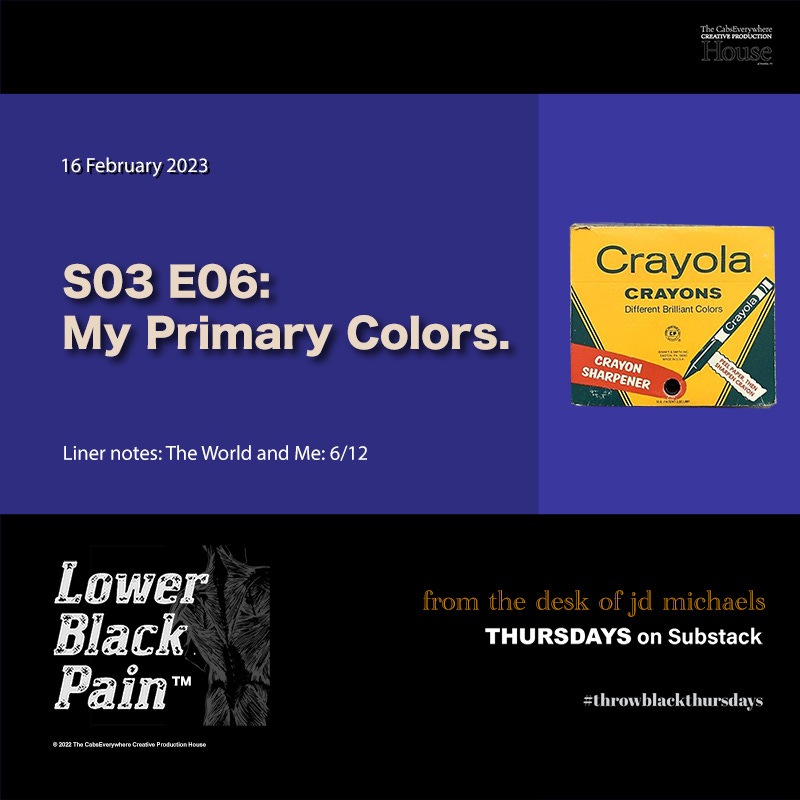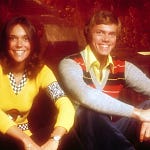Remember your first crayon box?
12 colors was enough for the sky and the ground and the house and the grass
and then you got the 24 pack with the two levels of crayons cause they had that little cardboard step inside the box and then you could really go to town on the cat and the dog and the cars and the people
but then you went to a kid’s house that had the mega box of 64 with the sharpener on the back (sharp inhale) and you thought you were a renaissance master. But no matter what you wanted to draw, you almost never used the color “yellow-green”.
There was also a color called “green-yellow”, which was fine when rendering the gentle sunlight peeking through branches of jaunty sycamores, but somehow nothing in your head was ever really “yellow-green”.
When all was drawn, that box always still held the apricot, salmon, and yellow-green crayons.
Well, the idea of having an orchestra, even a virtual one, is just like that.
Only sonic.
I’ve been sorting through strings and brass and winds and Irish flutes and Japanese percussion and hurdy-gurdy sounds for days, searching for the perfect combination to “color in” the music I am finishing. I was actually a little overwhelmed, until I realized today, on the subway, what would really be a great place to start – a crazy idea that would never, ever happen.
Four pianos.
C’mon, four pianos is much crazier than an orchestra, because they’re heavy and big and seem entirely impractical, even though it’s a visually simpler set-up. Four pianos is not a regular thing. I looked it up. Bach. Philip Glass. John Cage. And well, me. It’s a odd thing to ask for, because orchestras are set up all over the world already, but nobody has four pianos, you don’t need four pianos, it’s like having four dining room tables. For four pianos you have to rent a couple, and then somebody has to deliver them and tune them again because they don’t really travel well.
I’m not trying to make trouble, far from it, and I do want to add some other instruments too, eventually. It’s just that I don’t need 64 crayons, just four good ones. I don’t actually even play piano: I have a keyboard, and I use it a lot, but I don’t, y’know, play. So it’s interesting to me that I’ve chosen that sound as the core of the piece.
My love of piano is pretty specific, and although it would be more on theme to reference Basie or Gershwin or Tom Lehrer, it is much more honest to admit that they actually followed another guy.
As I a little kid learning how to read, I felt like a detective. Writing was all around me, everywhere, just waiting to be decoded, and I loved figuring out what things said. Math was ok, but I didn’t like the “showing your work” part; reading teachers never asked me to do that. Ideas could come out of my head and onto a page and I never needed to explain where they came from or how they ended up that way (which would have been a disaster because I still don’t know).
Even though most of the music that filled our home was from the radio, we did have a few albums; some jazz, soul, and a brick of Disney soundtracks my mom gave me on my third birthday from a 1-800 number on television (you could buy a lot of stuff that way).
On those special occasions we actually got a new album, it was a wonderful experience. It took forever to take the record out of the cover because I was never allowed to take the plastic off, and I never wanted to ruin the record sleeve because that’s where all the lyrics were. I would read every bit of information over and over while the records were playing (I couldn’t have been more fascinated if it was a treasure map on the back of the Declaration of Independence).
That is where I learned to spell “orchestra”. And “xylophone”.
And “Bacharach”.
It’s a tricky word… arach rather than ack. But there were so many opportunities to see it: written by, conducted by, piano played by, on every song. I’m not certain if my mother started out buying Burt Bacharach albums, I think we used to call them “Dionne Warwick albums”. But the third pop song I ever learned all the way through was “I’ll Never Fall In Love Again”. I was four.
I sang it everywhere. Now, the full picture here is that it’s 1971, and my Mom’s a divorcee, raising a kid by herself, two steps away from the 1960s in the middle of the Bible Belt, working two jobs sometimes to send her kid to a school that just happens not only to be Catholic but connected to an abbey filled with actual nuns. (Which is actually how I know French.) So: I sang this song EVERYWHERE – out on the playground, in the lunchroom, and after school in the main hallway because I remember the echoes were just really cool.
I’d heard a woman named Sandy Duncan sing it on some variety show, maybe Ed Sullivan? But I think the nuns thought that my mother was despondently pining through our apartment like a midwestern Bronte sister, singing that song over and over, a top-of-the-pops lament which floated through our windows and over the Kansan plains. When she came to pick me up one day, they gently and nunishly brought it up to her, then tilted their heads about 14 degrees and asked if everything was ok.
So my mom told me I had to learn another song from the album, but many of the Burt Bacharach songs were along the same lines, so we settled on “What the World Needs Now Is Love”. No nun can disagree with that.
And then Close To You came out, performed by the Carpenters. A little while ago I wanted to know what love sounded like, and there, that song, that performance, is the answer. The song is so simple, but when it would combine with your ride in the car or your trip to the grocery store or even breakfast it always lifted it, just a little bit. The songs of Burt Bacharach were everywhere, they seemed universal, but when I saw him on television he was just kind of a regular guy sitting and playing piano. Oh, and singing sometimes, which, strangely, wasn’t really his thing. But he made music out of music, if you know what I mean. It really was just a guy playing the piano.
What I love most about art is combinations of simplicity…harmony, dissonance, complement, contrast. Music has all that; notes and rests; highs and lows, louds and softs (that is not a word, is it? If I played that in scrabble, you would definitely challenge, right?)
Anyway, art isn’t always better if it’s more, so four pianos allows me to focus on the music and not spend time tweaking hurdy-gurdys. (Eeegh. That sounds awful). Four pianos is enough…I don’t need a crayon sharpener.














Share this post